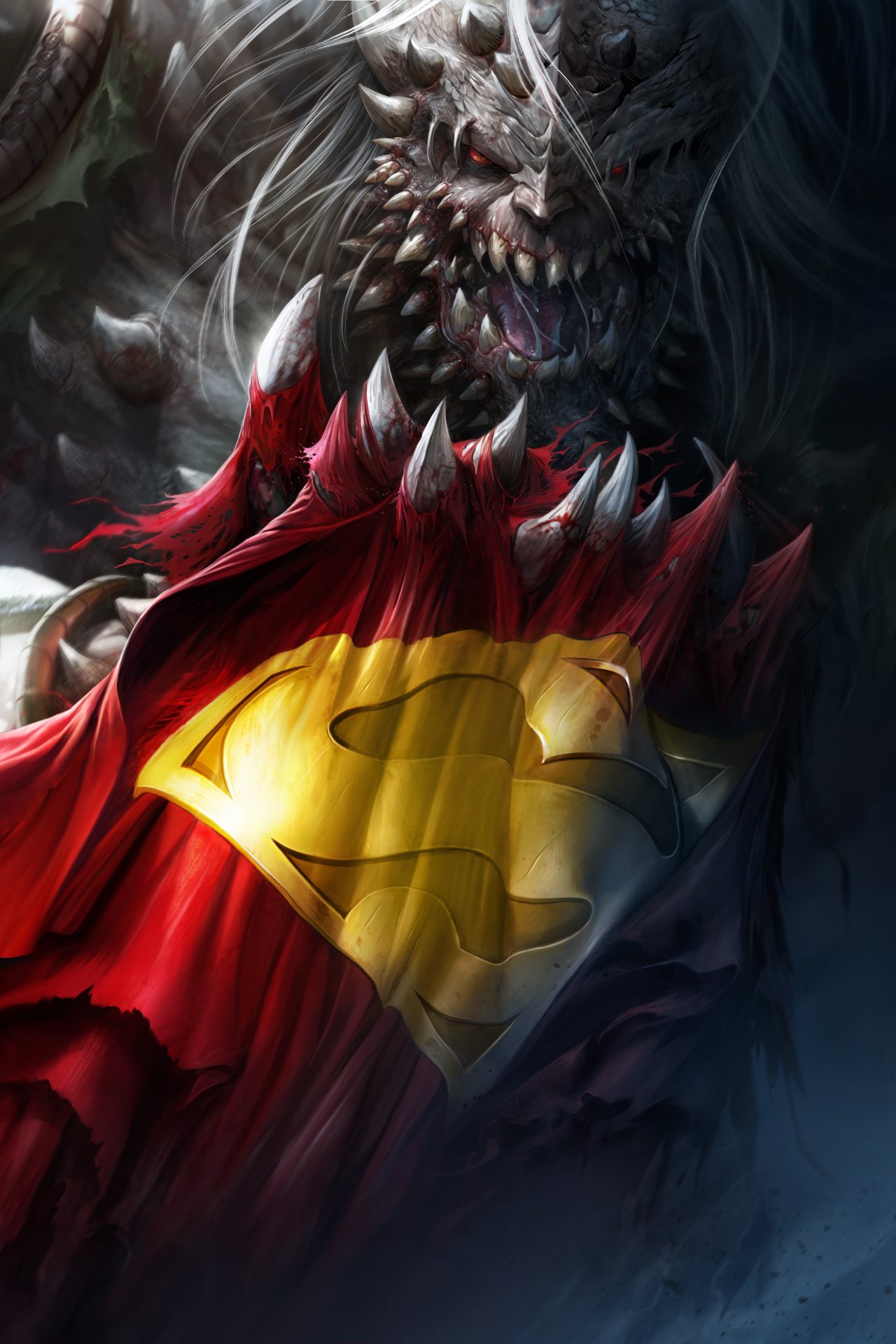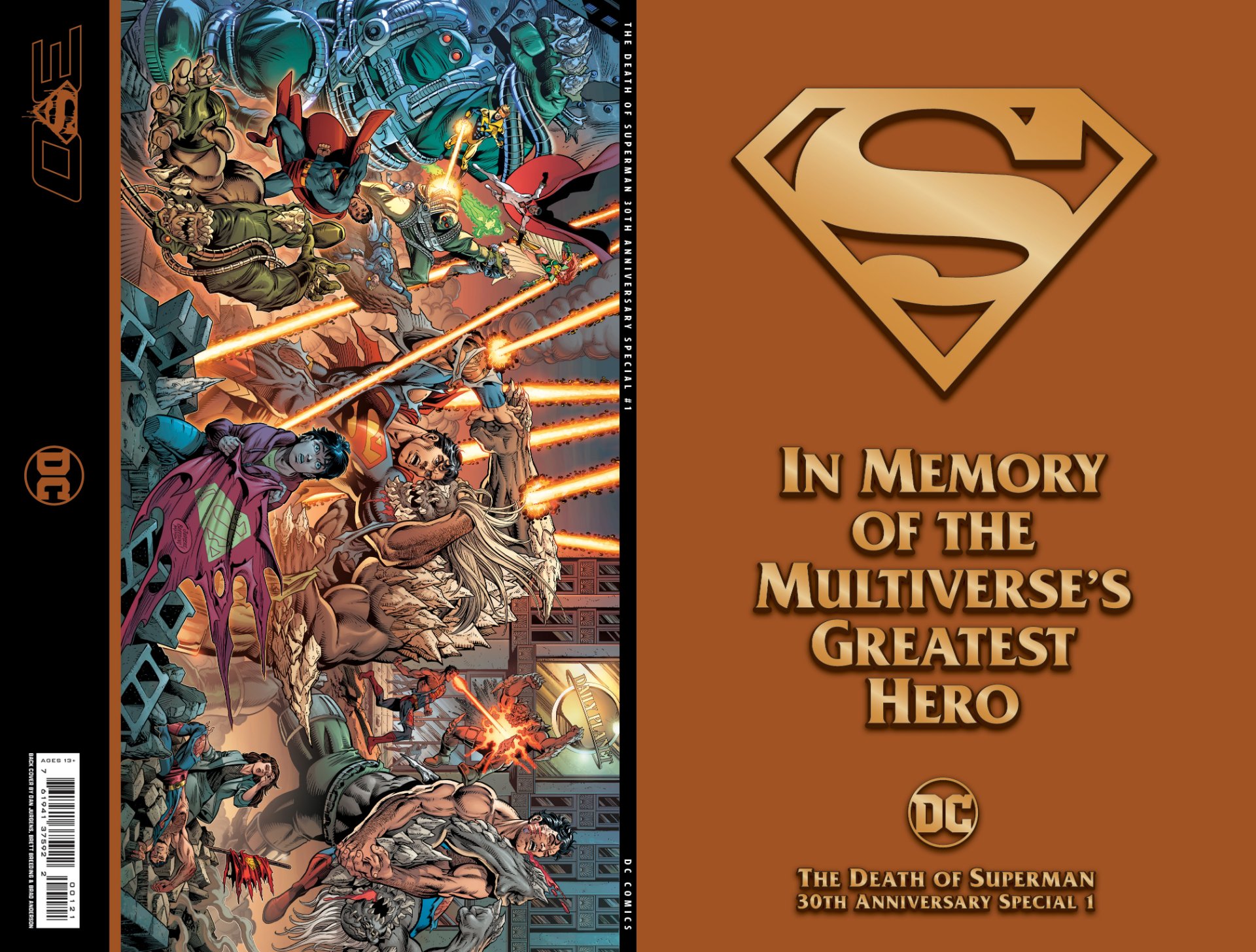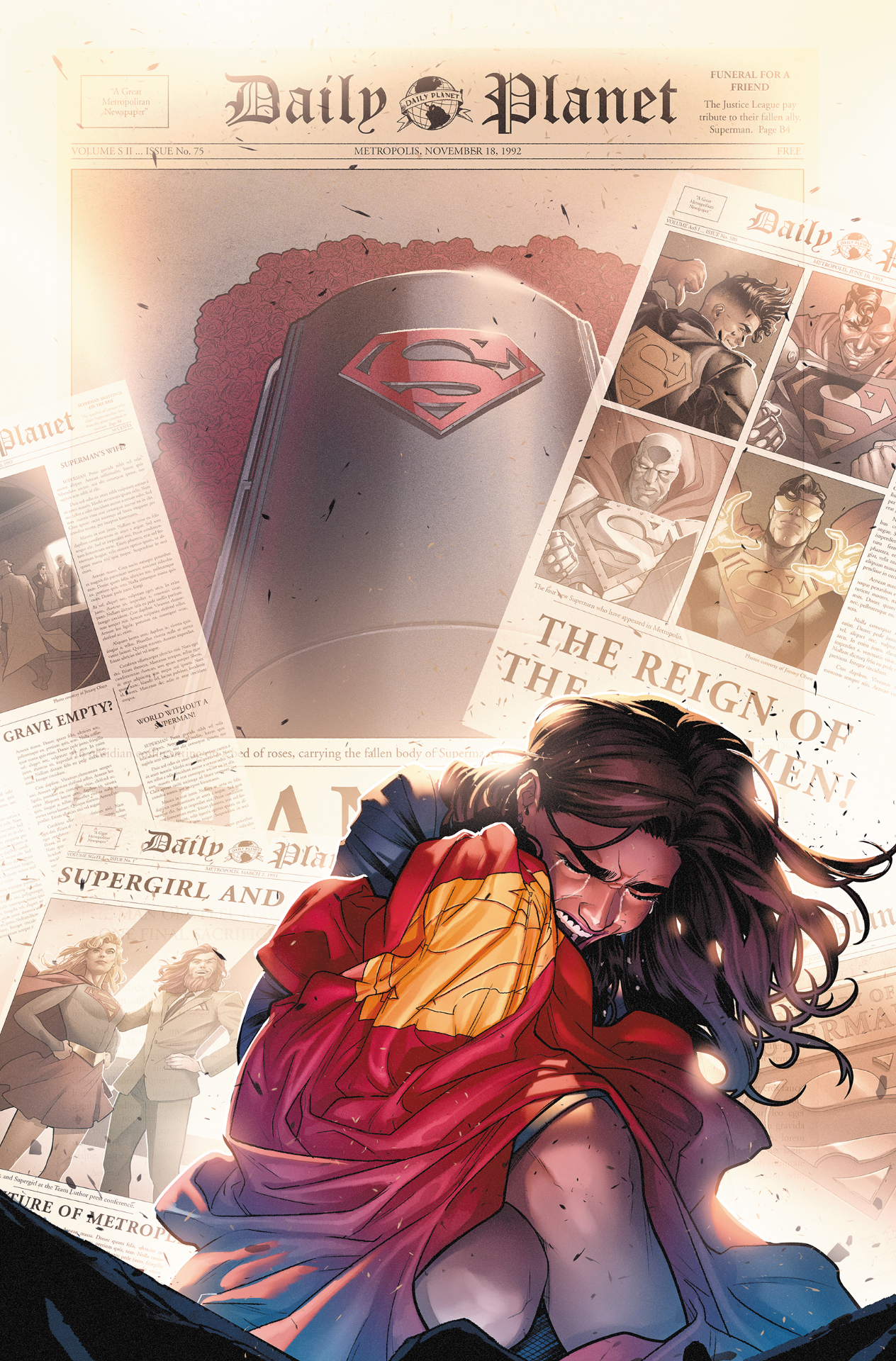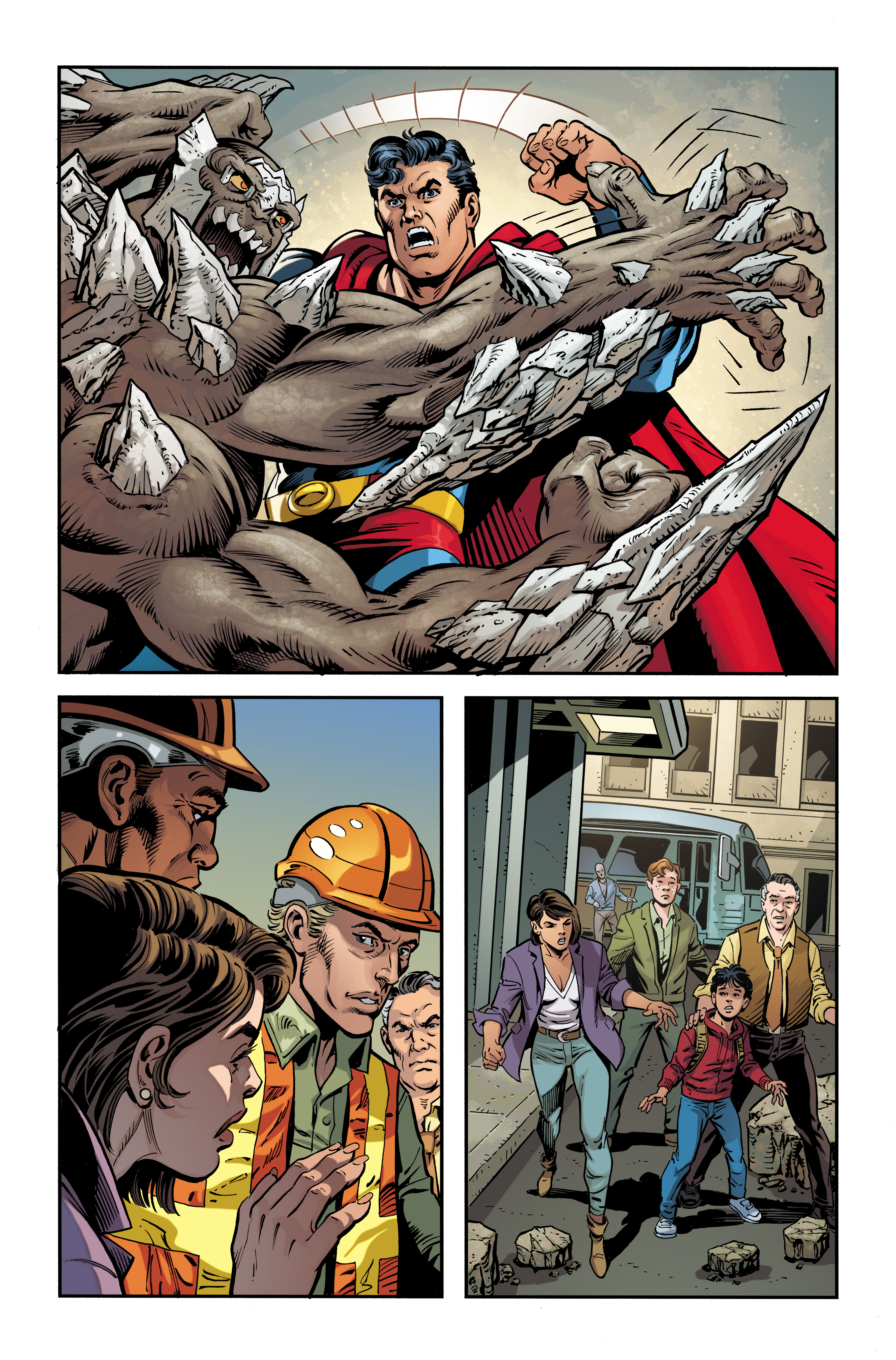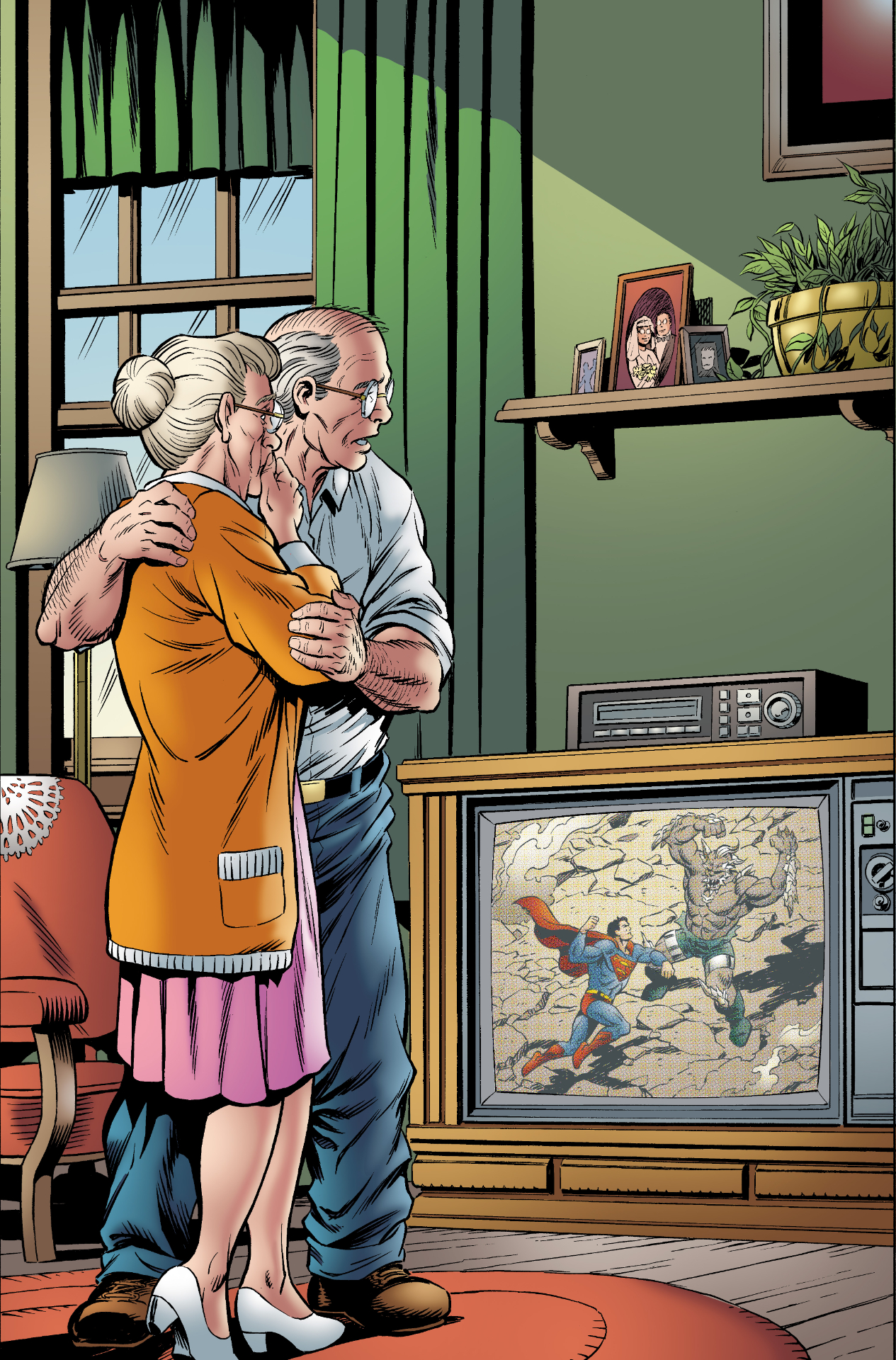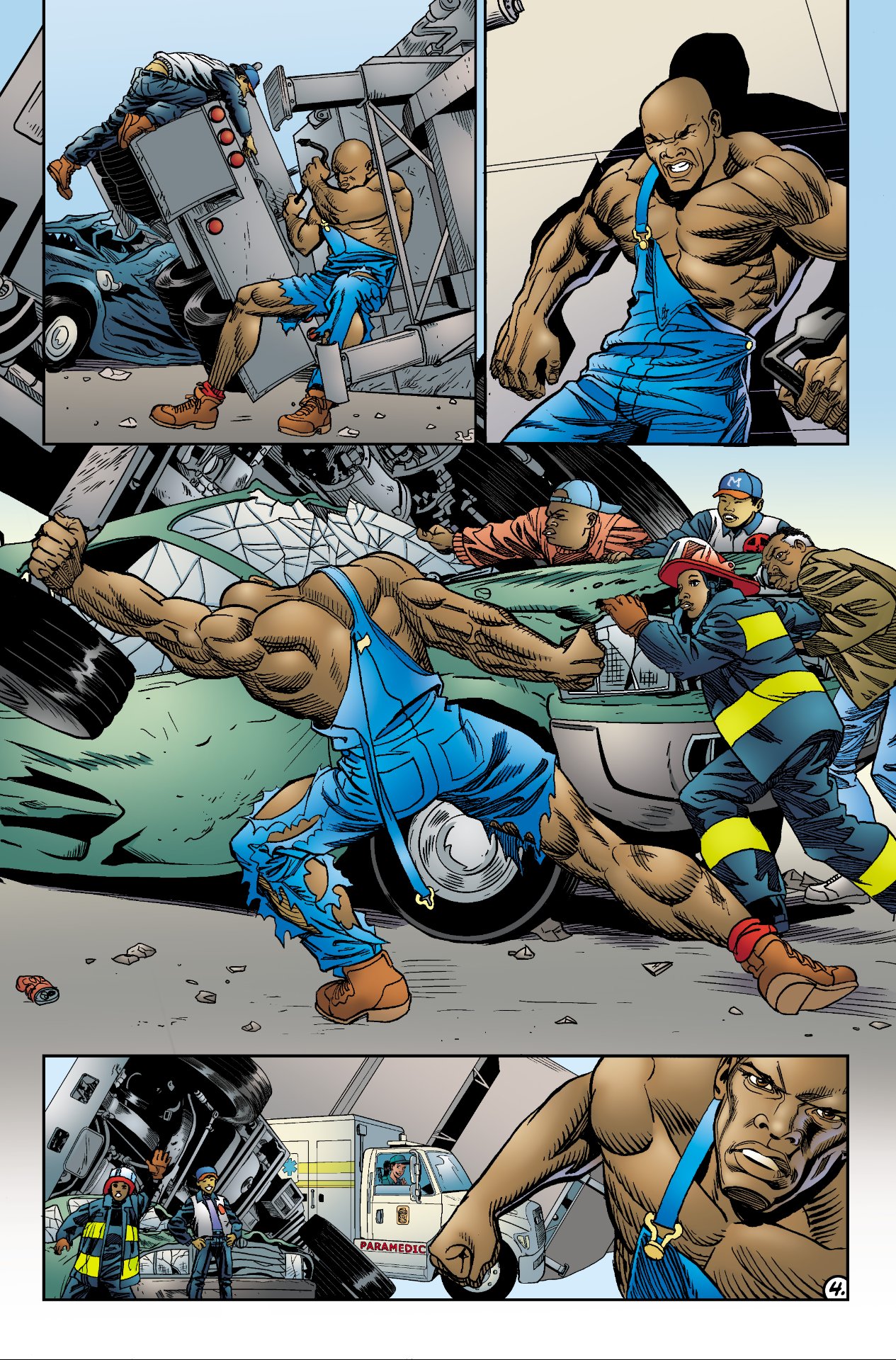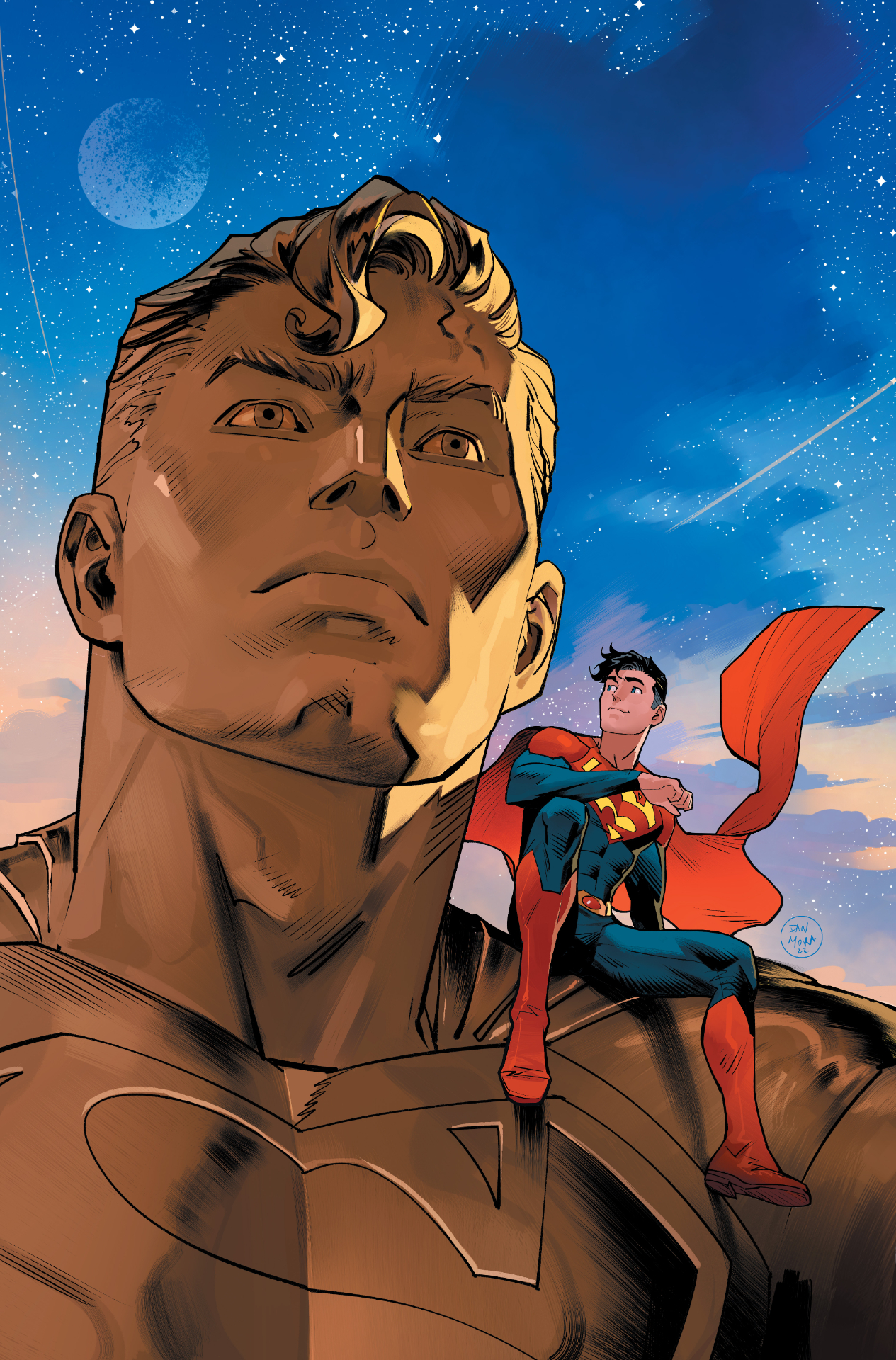How 'The Death of Superman' creators expanded the story for its 30th anniversary
The creative teams behind 1992's 'The Death of Superman' event return for a 30th anniversary special with four new stories
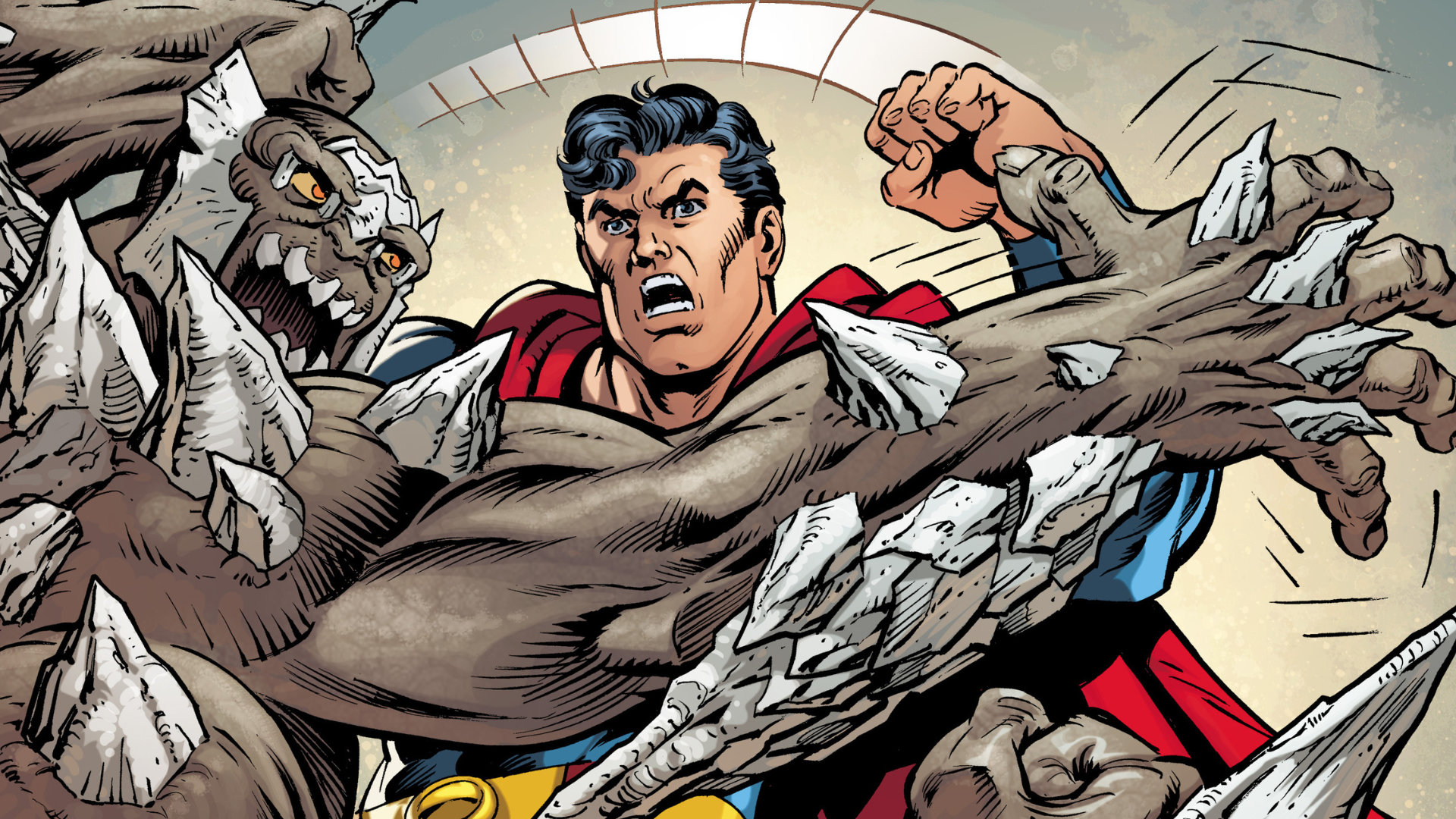
November marks 30 years since Superman died fighting Doomsday after an epic battle across Earth, and DC is celebrating with The Death of Superman 30th Anniversary Special #1, an 80-page one-shot anthology featuring the original creators behind the influential landmark event.
Each of the four short stories in this collection will reveal how Superman's allies and loved ones dealt with the fallout of his death, which at the time was marketed as being "permanent," with DC altering its solicitation schedule for several months to prevent readers from figuring out that the Man of Steel would soon be resurrected. The 1992 event didn't just alter the DC Universe itself – it also altered comics marketing and drew nationwide media attention.
The idea to kill Clark Kent came from one of several Superman summits that DC held for its core Superman team in the late '80s and early '90s following writer/artist David Byrne's departure in 1988. At several such meetings, writer/artist Jerry Ordway got used to making the same joke.
"We would go into a meeting room and [editor] Mike Carlin would put big, 16x20" sheets of poster board up on the wall, and we had to fill those with ideas," he tells Newsarama. "So, it started this joke of walking up to the last one and saying, 'OK, just put down The End: Superman dies.'"
At the time, Carlin and a team of 18 creators, including Ordway, planned to have Clark Kent marry Lois Lane in The Adventures of Superman #500 to celebrate the milestone issue. Then that storyline was delayed because Warner Bros. wanted the comics to coincide with the upcoming TV series Lois & Clark: The New Adventures of Superman, and DC's comics team had to come up with something new.
Like… Superman's death, perhaps.
"I'd write it down just to have that last box filled in. It's an artist/writer thing. You walk in and when you have a bunch of blank sheets, you want to quickly put something up to make it feel like you've accomplished something," Ordway says.
Get the best comic news, insights, opinions, analysis and more!
Although Ordway's suggestion to kill Superman started as a joke, it became a real idea thanks to Louise "Weezy" Simonson, who'd joined the Superman team at DC after several years working on the X-Men line at Marvel Comics.
"Weezy had been on the X-titles at Marvel and had written or facilitated the deaths of many characters in her career. She spoke up and said, 'You know what you get from killing a character, don't you? You get to show what that character means through the eyes of all the people who survive him – his friends, his family, even the bad guys. You get to show the reactions to the death and show how important that character was.' And that hit a chord with everyone in the room," artist Jon Bogdanove tells Newsarama.
"When you get right down to it, 'The Death of Superman' is a big fight and it's great and there's a monster – Brett Breeding had this great idea of having fewer panels in every issue until it's just a splash page book – and it's one of the great fights in comics. Let's face it.
"The real story for us – the one comment that I think created the entire phenomena of 'The Death of Superman' that we're still talking about 30 years later – was Weezy saying, 'You know what you get from killing a character, don't you?' That's what triggered 'Funeral for a Friend,' which is what we wrote first, and it all blossomed from there," Bogdanove says.
Now, Ordway, Simonson, Bogdanove, and Breeding are continuing The Death of Superman story in the four new stories for the 30th anniversary one-shot anthology, alongside fellow veterans Tom Grummett, Dan Jurgens, Roger Stern, and Butch Guice. And returning to this particular era brought up a lot of feelings for these creators, not just about the work or the story, but also about each other.
"Working with Jon is always a pleasure. Doing John Henry Irons is always a pleasure. The only drawback [of creating 'Time' for the 30th anniversary special] was that it's only eight pages," Simonson says of returning to this era.
"Jon's work is so evocative. It's so powerful. People are active in his books even when they're standing still. … It's almost like you're catching them in mid-movement. And the emotions Jon draws and makes you feel for the characters, feel with the characters, are very powerful. I am very lucky to have worked with Jon as much as I have, so it was just a wonderful opportunity to do it again."
Ordway took the opportunity as a challenge to do something new with existing material. "All I knew was DC said, 'Here's 10 pages. Pitch us some ideas on what you would do with 10 pages that fits in with what's already published,'" he says. "It was more like, 'Oh, this could be interesting,' and then just trying to figure out where you could find a thread that might feel like you could expand upon it without turning anything that was already printed into a lie or not following that continuity."
Breeding tells Newsarama he's thrilled to be back in this world, particularly because it's been so long since he and writer/artist Dan Jurgens worked together on an actual story: "The work itself is a lot of fun. The stuff Dan's been turning in – I've been having a lot of fun getting it from the standpoint of the fans waiting to see what's coming up. He's doing a beautiful job telling the story visually and I find myself looking at the pages going, 'Wow, that really is nice the way he designed that,' or 'How does he think of this stuff?'"
'Standing Guard,' by Stern, Guice, Glenn Whitmore, and Rob Leigh, retells the battle between Doomsday and Superman from the POV of the Guardians; 'Time,' by Simonson, Bogdanove, Whitemore, and Leigh, retells the story from the perspective of John Henry Irons; 'Above and Beyond,' by Ordway, Grummett, Doug Hazelwood, Whitmore, and Leigh, shows Ma and Pa Kent as they watch the battle on television news; and 'The Life of Superman,' by Jurgens, Breeding, Brad Anderson, and John Workman, follows young Jon Kent as he learns about his father's death and subsequent resurrection during a school presentation, then has to help Superman fight the new villain Doombreaker, who is somehow connected to Doomsday.
"There's a little Easter egg moment that takes place in Superman #75 that definitely sets up Doombreaker," Jurgens reveals. "I think part of the fun is that he is not Doomsday. He's a variation on what Doomsday is, if you will, with origins rooted in Superman #75. I think that becomes kind of fun for the story itself and it also allows us to get Lois very involved in the story."
"I realized very quickly that I should have asked to be paid by the finger," Breeding jokes.
As mentioned above, Superman's death in 1992 hugely impacted the DCU, and continues to do so today. Although it wasn't the character's final death – Superman is currently in a resurrection cycle in the ongoing Dark Crisis on Infinite Earths event – the storytellers needed readers to feel like it was. And now, they're exploring perspectives that didn't get the spotlight 30 years ago.
"I grabbed the latest omnibus and started paging through it, going, 'OK, I remember this and I remember this,' and the one page that stood out was in Superman #75: It's a full-page shot of Ma and Pa Kent hugging in front of the TV. They're hardly in the four issues of the actual fight. They're not even bystanders. They're viewers, 'cause they're watching it on TV, and I thought that was something to explore because as parents they know this is their son. Nobody else knows that. Superman is an alien. Lois Lane is the only one who can really share that [knowledge] and Lois is kind of on scene," Ordway tells us.
"In 1992, people aren't on cell phones and there's a communication blackout except for whatever the TV news might have. [The Kents] have to watch the whole thing from a distance and they get upset and they also find themselves trying to distract each other. I thought that was a very cute character bit because when one of them gets really worked up, the other one backs them down. Ma Kent's scrapbook comes out. It was very organic and it unfolded in a very organic way. I felt bad for Tom Grummett because I figured he probably wants to draw big fight scenes. Instead, we were kind of true to what we did back then, which was to do a dramatic character chapter."
For their story, Simonson and Bogdanove revisited a character they created, John Henry Irons, who later became known by the moniker Steel. His origin begins when he quits working in the weapons industry and enters the construction industry, then rescues a falling coworker and nearly sacrifices himself to do so. Superman rescues him and asks that John Henry help others in return.
"Thematically, I had this thing about being a superhero that I had explored with Superman where you're always aware of all the other things that you have to get done. This was a John Henry version of that where he needs to get to Superman, he needs to save him, but then he also keeps running into other people he needs to help and needs to save," Simonson says.
"One of the reasons I called [the story] 'Time' is that he tries to do things as quickly and efficiently and save as many people as possible, but then go back to his original idea. And then he gets another group of he people he has to stop and help. And at the end, he feels like he's a failure because he was unable to fulfill his original plan, but he really does what Superman called on him to do [when he saved John Henry's life]: Pass it along."
"'Time' is a snapshot of a moment in John Henry Irons's evolution that all sprang from that one splash page in The Adventures of Superman #500 where he's emerging from the rubble, obsessed. He's gotta stop Doomsday. He's gotta help Superman. It gives readers the backstory and an understanding of motivation for the evolution of Steel," Bogdanove adds.
Only three of the stories in The Death of Superman 30th Anniversary Special #1 focus on varying character perspectives during the original event. Jurgens and Breeding's story, 'The Life of Superman,' takes place in a version of the present day, which was very intentional – not just for introducing Doombreaker, but for bringing a variety of readers into the event and making it feel impactful.
"I didn't want to do a flashback story that took place [during the original Death of Superman]. What I wanted to do was find a way to address what an event this was 30 years ago, while also telling a story that could take place today," Jurgens explains. "That's why I made the decision to use Jon Kent, because Jon is someone who in all likelihood would not have known what happened that day, and we can see it through a younger person's eyes today when he goes to school and someone tells him about the death of Superman – which his own parents had not told him about.
"Really what I wanted to do with this was make sure that if you were there 30 years ago … this would bring back that sense of warm nostalgia that you would get a kick out of. By the same token, if you weren't there, if you happened to read The Death of Superman graphic novel 10 years ago … or maybe you've never read it, the idea was to have something new here that you could enjoy as well," he continues. "And there again, that's why I think Jon is a key element of this story. You can enjoy this book and realize what a celebration it is regardless of where you are on that spectrum."
By expanding these perspectives and re-examining the impact of Superman's death, these creative teams are also exploring their own relationships with the characters in the DCU and asking questions about heroism, grief, and legacy – all of which are themes currently being explored in stories like Dark Crisis on Infinite Earths and the ever-expanding Wonder Woman mythos. And at the heart of The Death of Superman – both in 1992 and 2022 – is the question of what Clark Kent leaves behind.
"I didn't read Superman comics as a kid, but I loved the character from the TV shows and cartoons. Something about him resonated with me when I was very young, and having gotten to work on the character – especially with the group of people that I did for as long as I did on the series and stories that we did – I felt like I knew the character. I felt comfortable working with the character," Breeding says. "I love the fact that I could tell people who didn't know what I did that I drew Superman and they knew exactly what that was, as opposed to so many other characters in comics. Everybody knows who Superman is.
"And Superman – whatever you think of him – relates something positive to everybody. Some people take that positivity and think it's a hokey thing; other people take that and think, 'Geez, why aren't more of us like that?' I think that's probably the camp that I'm in. The character resonates with me doing the right thing. The level of integrity that Superman has in doing the right thing because he can. There's nothing wrong with that. There's nothing to be ashamed of. We should all aspire to it," he continues.
"It makes me feel connected to the character the way I am, and I certainly enjoy that association. I really enjoy the fact that now, he's a lot more popular than he was when I started on the Superman books. Back then, people weren't buying Superman. Now there seems to be a lot more interest in the character. As long as they leave the red trunks in place and stop playing around with that, they'll be fine."
The Death of Superman 30th Anniversary Special #1 is on sale November 1.
Doomsday is one of the best Superman villains of all time.

Samantha Puc (she/they) is an editor at Newsarama and an avid comics fan. Their writing has been featured on Refinery29, Bitch Media, them., The Beat, The Mary Sue, and elsewhere. She is currently pursuing a Master of Fine Arts degree in creative nonfiction at The New School.
